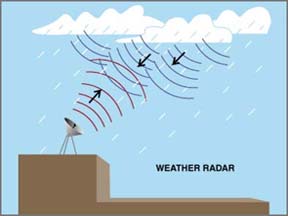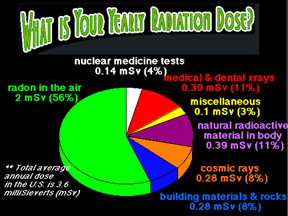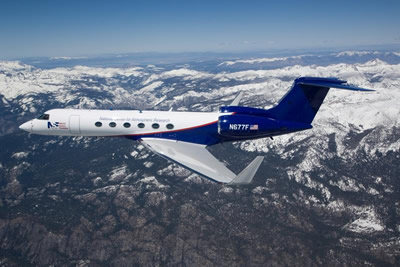This aircraft is a modified Gulfstream V jet and can carry 5600 pounds of weather instruments that collect data from the Earth's atmosphere. The aircraft is maintained and operated for the National Science Foundation by the National Center for Atmospheric Research.
Click on image for full size
Image courtesy of the University Corporation for Atmospheric Research
Research Aircraft
Scientists sometimes travel in specially outfitted airplanes in order to gather data about atmospheric conditions. These research aircraft have special inlet ports that bring air from the outside into the plane so scientists can sample it and make measurements. Some research airplanes also carry radar and other special instruments.
Airplanes can collect information about many different components of the atmosphere, including aerosols, cloud physics, atmospheric chemistry, high level winds, and radiation. They can also carry camera to take photographs of clouds from up in the air. Scientists use the information gathered by aircraft to learn more about topics like how clouds form, the effects of air pollution in the atmosphere, and what causes turbulence.
Research aircraft can fly as high as 20,000 kilometers (approximately 65,000 feet). Ships can also carry instruments that gather data about the atmosphere, the ocean, weather, and climate.
You might also be interested in:

Radar is important to weather forecasters because it can detect rain and hail. The radar bounces radio waves off water particles in clouds. A computer measures how long it takes for the radio waves to
...more
When you look up at the sky, you are looking at more than just air. There are also billions of tiny bits of solid and liquid floating in the atmosphere. Those tiny floating particles are called aerosols
...more
When you think of chemistry, do you think about mixing colored liquids in test tubes and maybe making an explosion... or at least a nice puff of smoke? Did you know that a lot of chemistry happens in Earth's
...more
Wind is moving air. Warm air rises, and cool air comes in to take its place. This movement creates different pressures in the atmosphere which creates the winds around the globe. Since the Earth spins,
...more
Radiation comes in two basic types: electromagnetic radiation transmitted by photons, and particle radiation consisting of electrons, protons, alpha particles, and so forth. Electromagnetic radiation,
...more
When clouds form they contain millions of water droplets in each cubic meter of air. Each of the cloud droplets forms on a particle; scientists call a collection of particles an aerosol. These particles
...more
What do smog, acid rain, carbon monoxide, fossil fuel exhausts, and tropospheric ozone have in common? They are all examples of air pollution. Air pollution is not new. As far back as the 13 th century,
...more















